GUEST BLOGGER LAURA PERDEW
Imagine a thriving wetland where a trash dump used to be. Now, picture a Canada lynx prowling the mountains of Colorado after being gone from the state for decades. Take a moment to visualize a wildlife corridor over a busy highway. These are not made-up stories, but true accounts that reveal the power of conservation. Now imagine using these stories to motivitate student writing.
In the news, we often hear the worst about what is happening to our planet, the environment, natural resources, and wild species. Yet these accounts overshadow amazing, ongoing conservation efforts happening all over the world, on every continent and in every type of habitat. People are making a difference.
Preparation
While each conservation effort is unique depending on the needs of the ecosystem or species involved, what they have in common is that each is a story with its own characters, setting, plot, challenges, and themes. In this activity, students will research conservation successes and write the narrative for that story. The book is for readers ages 9-12, but activity can be adapted to meet the ability and interests of both younger and older students.
What is conservation?
Conservation is a term that is tossed around a lot. But what does it mean exactly? And how does it differ from preservation? Open the lesson with a discussion about the meaning of conservation and how it differs from preservation.
Ask students to provide examples of conservation they’ve seen or participated in, or heard about, either locally or globally. Discuss the importance of conservation.
Student writing: Conservation narratives
Divide the class into eight groups. Each group will become an expert on a different conservation approach: restoration, rewilding, reintroduction, species recovery, habitat reconnection, community-based conservation, ecotourism, and laws and protections.
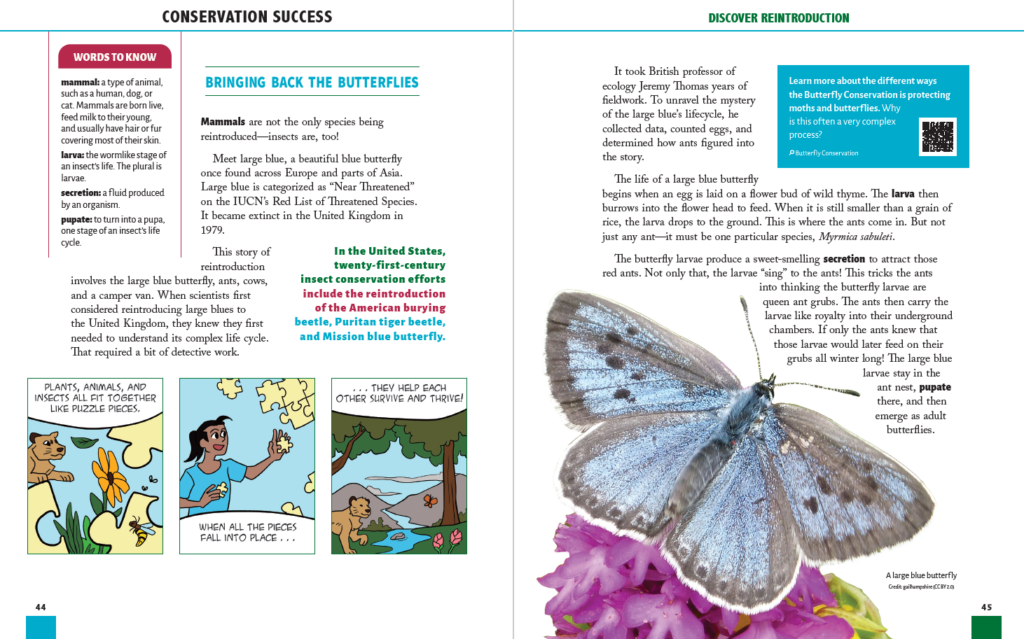
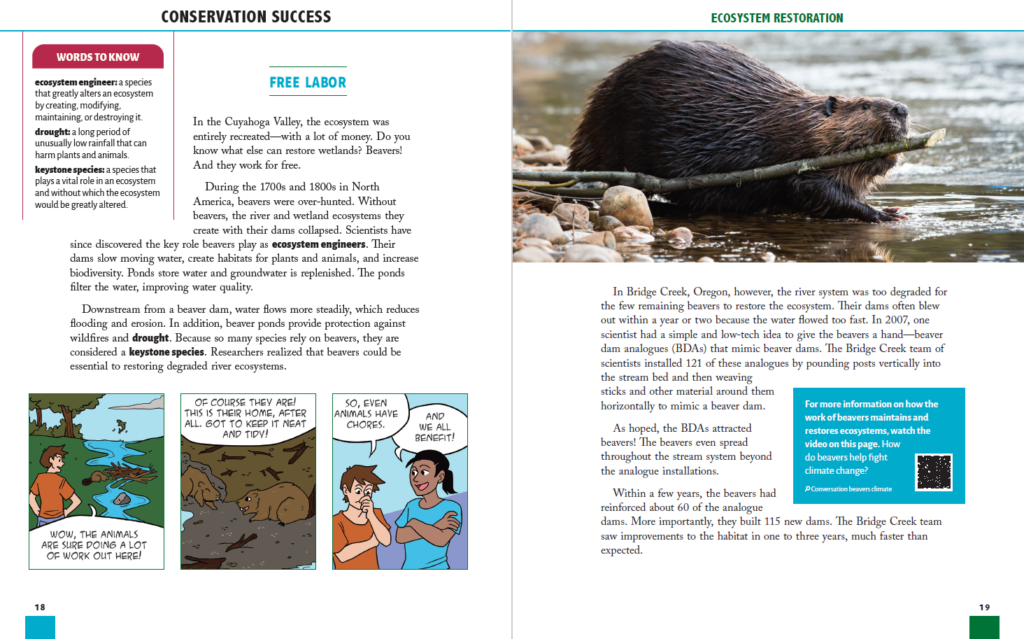
- Each group reads the chapter about their assigned conservation approach and defines what that approach looks like in action.
- Students (individually, in pairs, or in groups) research an example of their type of conservation effort in action, taking notes on the characters, setting, and plot of the conservation story.
| CONSERVATION STORIES | |
| Conservation Approach | Summary |
| Characters: What individuals and organizations were involved? | |
| Setting: Where did this effort take place? In what type of habitat? | |
| Problem/Issue: What problems were they hoping to solve? | |
| Solutions: What solutions did they come up with? | |
| Plot: How did this story begin? What were their first steps? | |
| Plot: What challenges did they face? How did they overcome them? | |
| How did they utilize Indigenous knowledge, science, and/or technology? | |
| Resolution: How did they know their efforts were successful? Is the effort ongoing? | |
- Students use the information collected to write the conservation story.
- To meet the needs of diverse learners and ages, teachers can provide internet bookmarks and videos to assist with research, as well as scaffolded story maps.
- There are several possibilities to provide students with a wide audience for their work:
- students to read the story to 3-5 other people (classmates, family, other adults);
- each student reads their story out loud to the class or to their group;
- create an anthology using student narratives;
- require students to read and respond to 3-5 stories.
Student writing alternatives
For those teaching units on journalism, adapt this activity to teach students how to write for newspapers, magazines, websites, or broadcast news.
Additionally, create a classroom museum, a podcast series, or a conservation success stories class website.
Featured image credit: “Butterfly flying free from cupped hands” by Beverly & Pack is licensed under CC BY-NC-ND 2.0.
Laura Perdew is a mom, author, writing coach, presenter, and former middle school teacher. Her passion for nature and the environment not only led her to move to Colorado decades ago, but also steered her toward writing for children. She writes both fiction and nonfiction for kids, including dozens of books for the education market. Keystone Species: Meet the Animals Key to Ecosystem Health and Biodiversity (Nomad Press, 2024), earned a spot on the Green Earth Book Award short list, and Biodiversity: Explore the Diversity of Life on Earth (Nomad Press, 2019) is on the Booklist editor’s list of the Top 10 Books on the Environment & Sustainability for Youth 2020. She lives, plays, and writes in Boulder, Colorado.



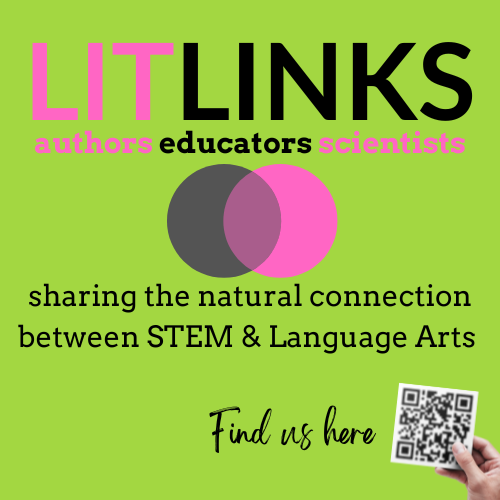
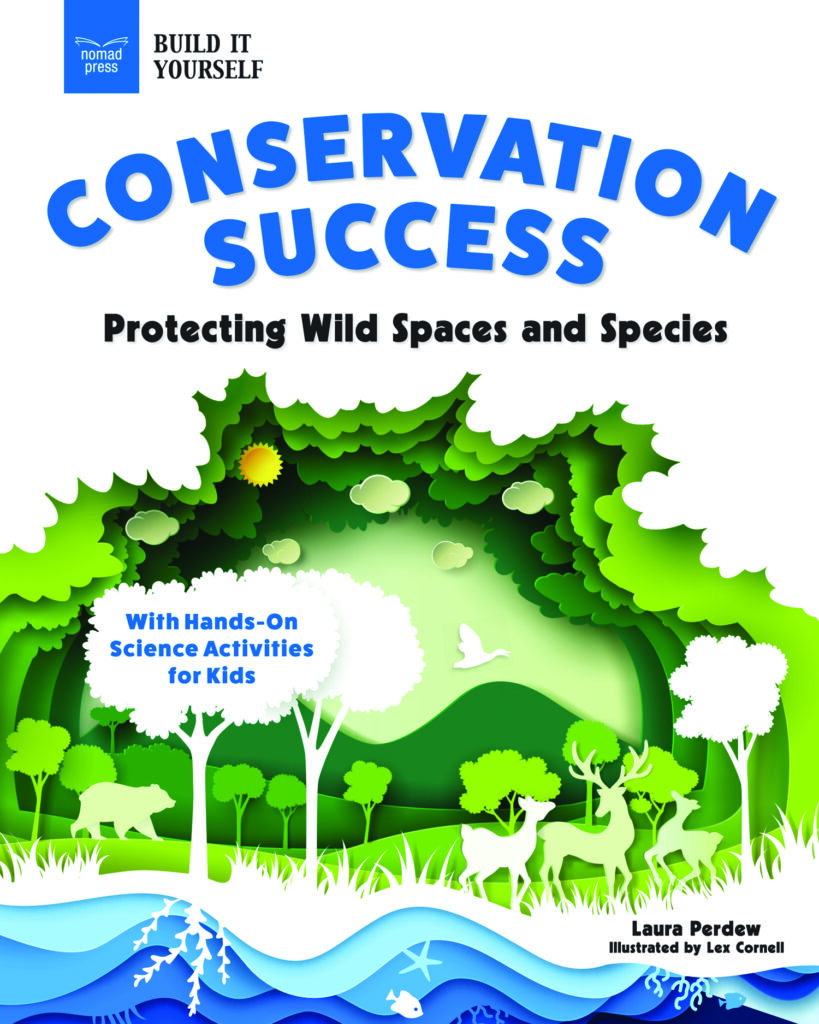


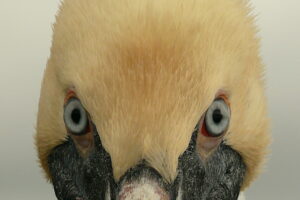



Leave a Reply
Your email is safe with me.